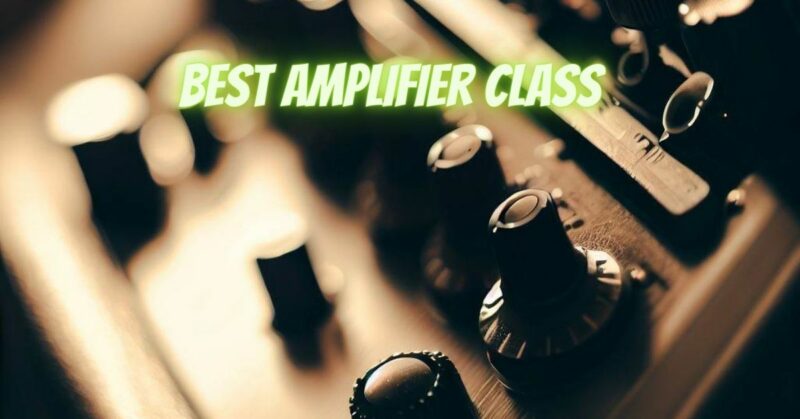In the world of audio amplification, the quest for the best amplifier class is a perennial pursuit among audiophiles and audio enthusiasts seeking the ultimate sound experience. Each amplifier class presents a unique set of characteristics, advantages, and compromises, making the decision a complex and personal one. In this article, we embark on a journey to unravel the audiophile’s dilemma, exploring the most common amplifier classes and the factors to consider when determining the best amplifier class for your audio system.
The Main Amplifier Classes:
Before we delve into the comparison, let’s briefly explore the most common amplifier classes:
- Class A: Class A amplifiers are known for their uncompromising dedication to sound quality. They continuously conduct the full audio signal through the output transistors, resulting in exceptional sound purity. However, their continuous operation leads to low efficiency and significant heat generation.
- Class AB: Class AB amplifiers strike a balance between sound quality and efficiency. They combine elements of Class A and Class B designs, conducting a small amount of current even in the absence of an input signal to reduce crossover distortion. While more efficient than Class A amplifiers, they still generate some heat.
- Class D: Class D amplifiers utilize pulse-width modulation (PWM) to rapidly switch the output transistors on and off, approximating the input audio signal. Their efficiency is unmatched, making them ideal for portable devices and energy-conscious applications. However, early designs had potential switching artifacts and distortion, though modern advancements have minimized these issues.
- Class G: Class G amplifiers are an evolution of Class AB designs. They utilize multiple power supply rails that switch dynamically based on the input signal level, optimizing efficiency and reducing power dissipation. Class G amplifiers maintain continuous analog amplification, resulting in superior sound quality compared to Class D designs.
- Class H: Class H amplifiers take efficiency to the next level by dynamically adjusting the power supply voltage to match the required power demand of the audio signal. This dynamic supply voltage tracking ensures highly efficient operation and minimal heat generation.
Choosing the Best Amplifier Class:
The “best” amplifier class largely depends on your specific audio preferences, requirements, and the type of audio system you have. Here are some factors to consider when making your decision:
- Sound Quality: If uncompromising sound quality is your top priority, Class A and Class G amplifiers are strong contenders. Class A amplifiers offer pristine audio fidelity, while Class G amplifiers strike a balance between efficiency and sound purity.
- Efficiency and Heat Dissipation: If energy efficiency and reduced heat generation are critical, Class D and Class H amplifiers stand out. Class D amplifiers are highly efficient with minimal heat dissipation, making them ideal for portable devices and modern audio systems. Class H amplifiers take efficiency even further with dynamic voltage tracking.
- Power Handling: For driving power-hungry speakers and handling dynamic audio content, Class G and Class H amplifiers are excellent choices. Both classes can deliver substantial power output efficiently.
- Application: Consider the application of the amplifier. For home audio systems, Class A, Class AB, Class G, or Class H amplifiers may be suitable. Class D amplifiers are well-suited for portable devices, car audio systems, and energy-conscious applications.
- Budget: Amplifier classes vary in cost, with Class A and high-end Class AB amplifiers often being more expensive than Class D and Class G amplifiers. Consider your budget and how it aligns with your desired amplifier class.
The best amplifier class is ultimately subjective, and there is no one-size-fits-all solution. Each class brings its unique strengths and compromises, catering to different audio preferences and system requirements. Audiophiles and audio enthusiasts are encouraged to audition various amplifiers, considering their specific needs and priorities.
It’s essential to strike a balance between sound quality, efficiency, power handling, and budget. Whether you prioritize the pristine sound of Class A, the efficiency of Class D, or the balance of Class G and Class H, the quest for the best amplifier class is a journey of discovery that adds to the magic and excitement of the audiophile’s world. Embrace the exploration, immerse yourself in the music, and let your ears guide you to the amplifier class that resonates with your soul.


